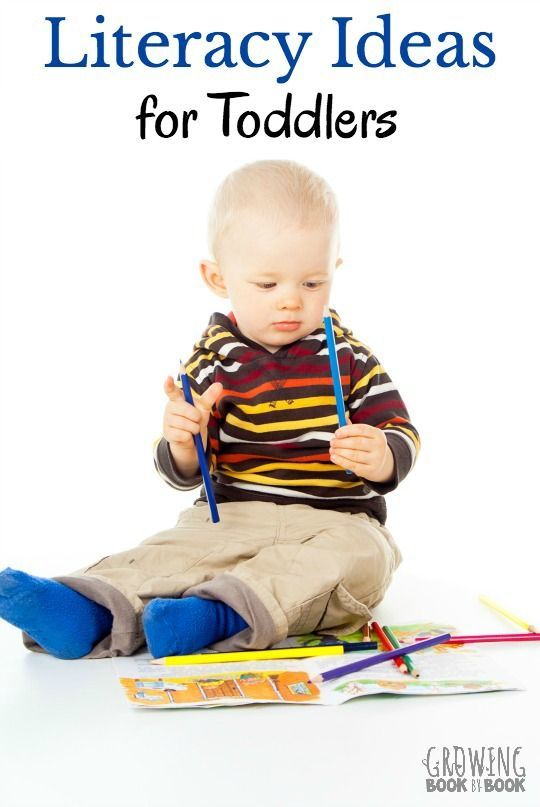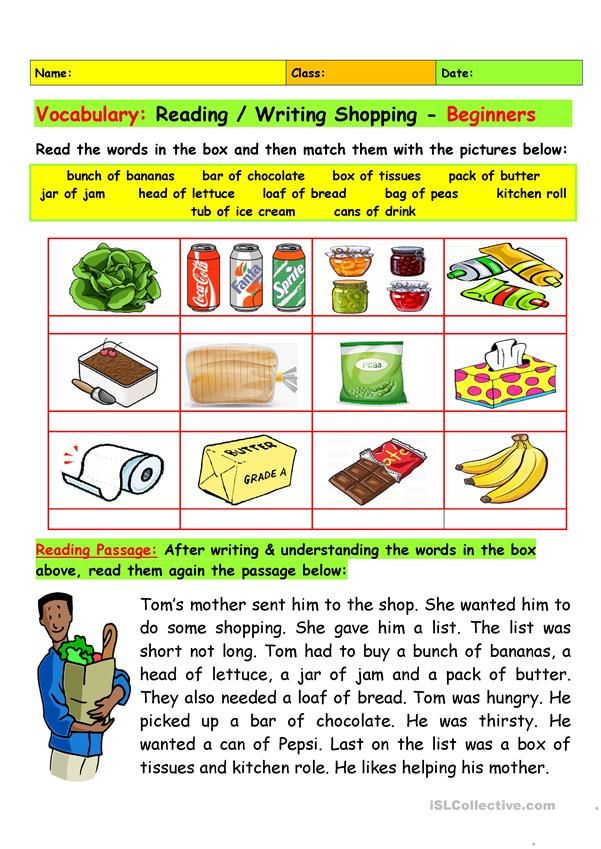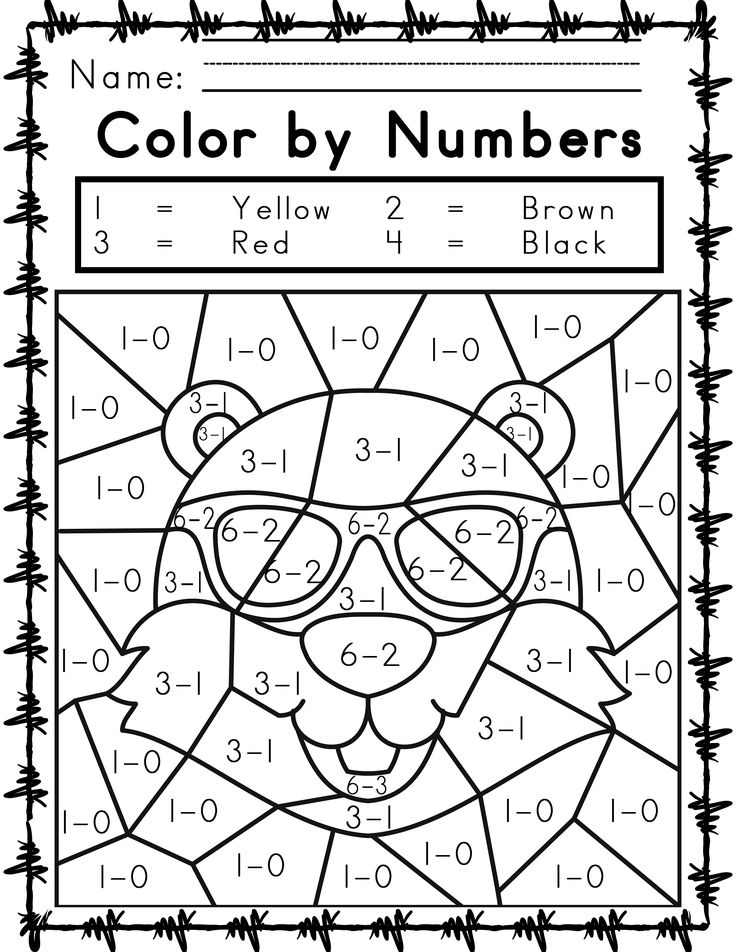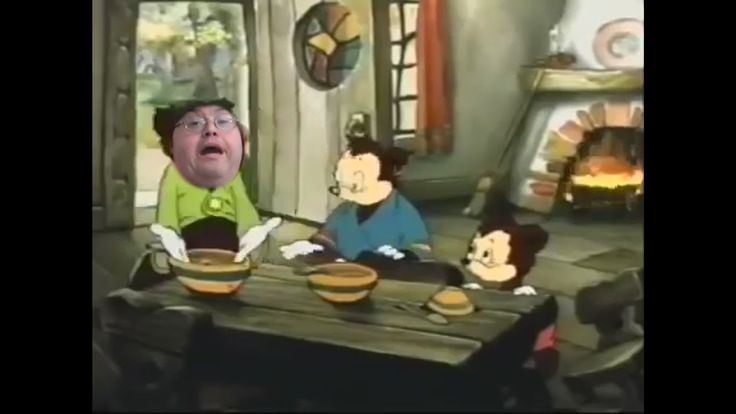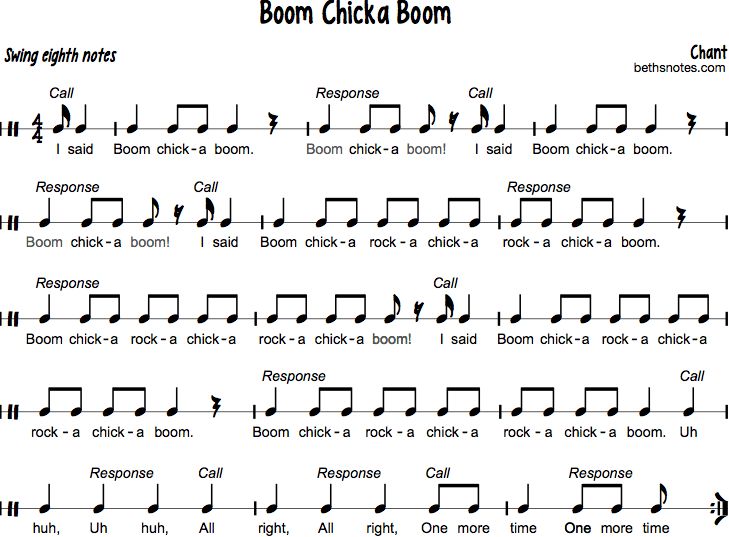What is little red riding hood
The story of Little Red Riding Hood
[en español]
by Leanne Guenther
Once upon a time, there was a little girl who lived in a village near the forest. Whenever she went out, the little girl wore a red riding cloak, so everyone in the village called her Little Red Riding Hood.
One morning, Little Red Riding Hood asked her mother if she could go to visit her grandmother as it had been awhile since they'd seen each other.
"That's a good idea," her mother said. So they packed a nice basket for Little Red Riding Hood to take to her grandmother.
When the basket was ready, the little girl put on her red cloak and kissed her mother goodbye.
"Remember, go straight to Grandma's
house," her mother cautioned. "Don't dawdle along the way and please don't talk to strangers! The woods are dangerous. "
"Don't worry, mommy," said Little Red Riding Hood, "I'll be careful."
But when Little Red Riding Hood noticed some lovely flowers in the woods, she forgot her promise to her mother. She picked a few, watched the butterflies flit about for awhile, listened to the frogs croaking and then picked a few more.
Little Red Riding Hood was enjoying the warm summer day so much, that she didn't notice a dark shadow approaching out of the forest behind her...
Suddenly, the wolf appeared beside her.
"What are you doing out here, little girl?" the wolf asked in a voice as friendly as he could muster.
"I'm on my way to see my Grandma who lives through the forest, near the brook," Little Red Riding Hood replied.
Then she realized how late she was and quickly excused herself, rushing down the path to her Grandma's house.
The wolf, in the meantime, took a shortcut. ..
..
The wolf, a little out of breath from running, arrived at Grandma's and knocked lightly at the door.
"Oh thank goodness dear! Come in, come in! I was worried sick that something had happened to you in the forest," said Grandma thinking that the knock was her granddaughter.
The wolf let himself in. Poor Granny did not have time to say another word, before the wolf gobbled her up!
The wolf let out a satisfied burp, and then poked through Granny's wardrobe to find a nightgown that he liked. He added a frilly sleeping cap, and for good measure, dabbed some of Granny's perfume behind his pointy ears.
A few minutes later, Red Riding Hood knocked on the door. The wolf jumped into bed and pulled the covers over his nose. "Who is it?" he called in a cackly voice.
"It's me, Little Red Riding Hood."
"Oh how lovely! Do come in, my
dear," croaked the wolf.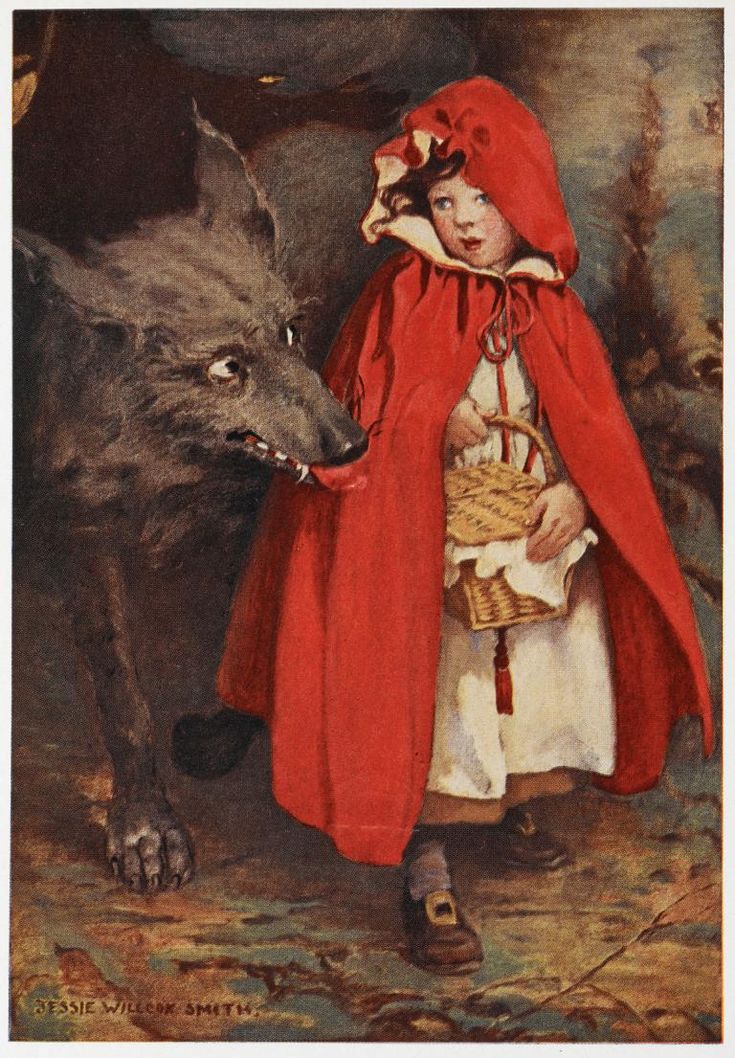
When Little Red Riding Hood entered the little cottage, she could scarcely recognize her Grandmother.
"Grandmother! Your voice sounds so odd. Is something the matter?" she asked.
"Oh, I just have touch of a cold," squeaked the wolf adding a cough at the end to prove the point.
"But Grandmother! What big ears you have," said Little Red Riding Hood as she edged closer to the bed.
"The better to hear you with, my dear," replied the wolf.
"But Grandmother! What big eyes you have," said Little Red Riding Hood.
"The better to see you with, my dear," replied the wolf.
"But Grandmother! What big teeth you have," said Little Red Riding Hood her voice quivering slightly.
"The better to eat you with, my dear," roared the wolf and he leapt out of the bed and began to chase the little girl.
Almost too late, Little
Red Riding Hood realized that the person in the bed was not her
Grandmother, but a hungry wolf.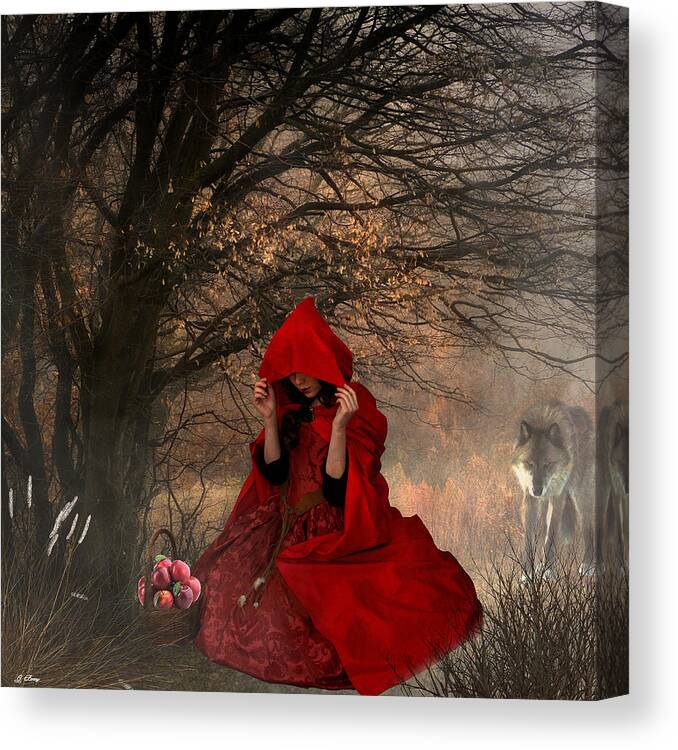
She ran across the room and through the door, shouting, "Help! Wolf!" as loudly as she could.
A woodsman who was chopping logs nearby heard her cry and ran towards the cottage as fast as he could.
He grabbed the wolf and made him spit out the poor Grandmother who was a bit frazzled by the whole experience, but still in one piece."Oh Grandma, I was so scared!" sobbed Little Red Riding Hood, "I'll never speak to strangers or dawdle in the forest again."
"There, there, child. You've learned an important lesson. Thank goodness you shouted loud enough for this kind woodsman to hear you!"
The woodsman knocked out the wolf and carried him deep into the forest where he wouldn't bother people any longer.
Little Red Riding Hood and her Grandmother had a nice lunch and a long chat.
Printable version of this page
Story Pages Templates:
- Close the template window after printing to return to this screen.

- Set page margins to zero if you have trouble fitting the template on one page (FILE, PAGE SETUP or FILE, PRINTER SETUP in most browsers).
Template Page 1 (color) or (B&W)
Template Page 2 (color) or (B&W)
Template Page 3 (color) or (B&W)
Template Page 4 (color) or (B&W)
Template Page 5 (color) or (B&W)
Template Page 6 (color) or (B&W)
Template Page 7 (color) or (B&W)
Template Page 8 (color) or (B&W)
Template Page 9 (color) or (B&W)
Template Page 10 (color) or (B&W)
Personalized Little Red Riding Hood Story For Kids
Personalized classic tale
Personalize now Personalize now
Recommended for 5 year-olds and under In this new version of the classic, the kids will join Little Red Riding Hood in an amazing adventure!
$44.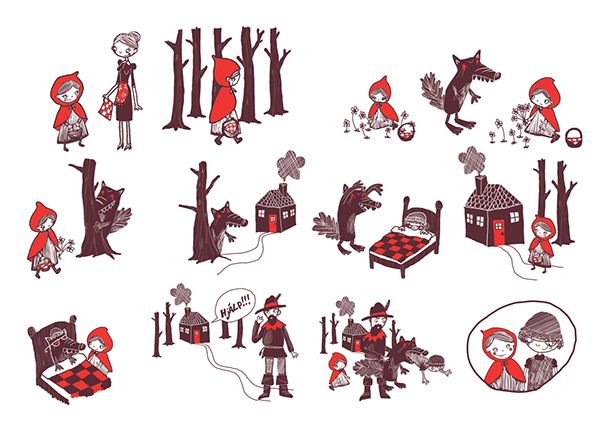 90 Hardcover
90 Hardcover
$44.90 Hardcover
Recommended for 5 year-olds and under In this new version of the classic, the kids will join Little Red Riding Hood in an amazing adventure!
Book Overview Awesome Experience Quality and Dimensions
The book Experience Dimensions
An adventure at Grandma's house
Your little one becomes the main character in tales that have crossed generations. Along with Little Red Riding Hood, they will discover the truth behind the Big Bad Wolf.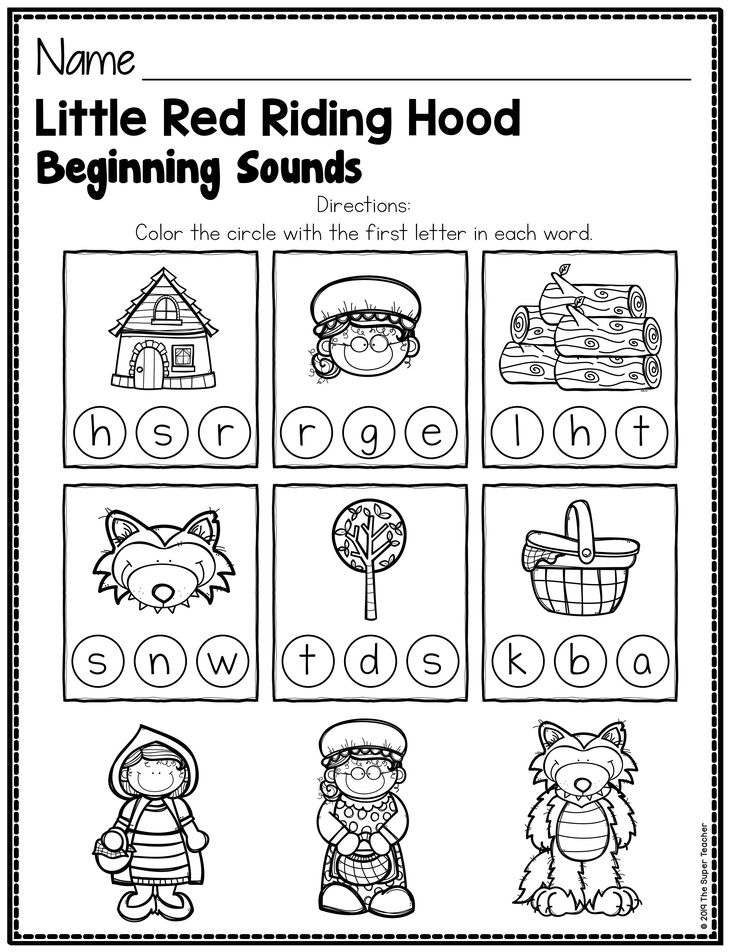 Create your personalized book and have fun with this new version of the classic story.
Create your personalized book and have fun with this new version of the classic story.
Your child inside this wonderful story with Little Red Riding Hood
Making your child the protagonist in this book is easy! Create the character with your child’s features: skin tone, hair, eyes, clothing, and shoes. Then just check the result, receive your book at home, and enjoy reading along with your loved one!
Personalized Little Red Riding Hood Book
Little Red Riding Hood
Little Red Riding Hood is a kind and innocent little girl. She loves to visit her grandma who lives in the forest, bringing her delicious sweets and bread. She never leaves home without her red hood, which was a special gift from Grandma. However, one day she disobeys her mother and learns a great lesson.
Origin Of The Story
The classic tale of Little Red Riding Hood originated from European fables of the 20th century, its best-known version was published by the Brothers Grimm.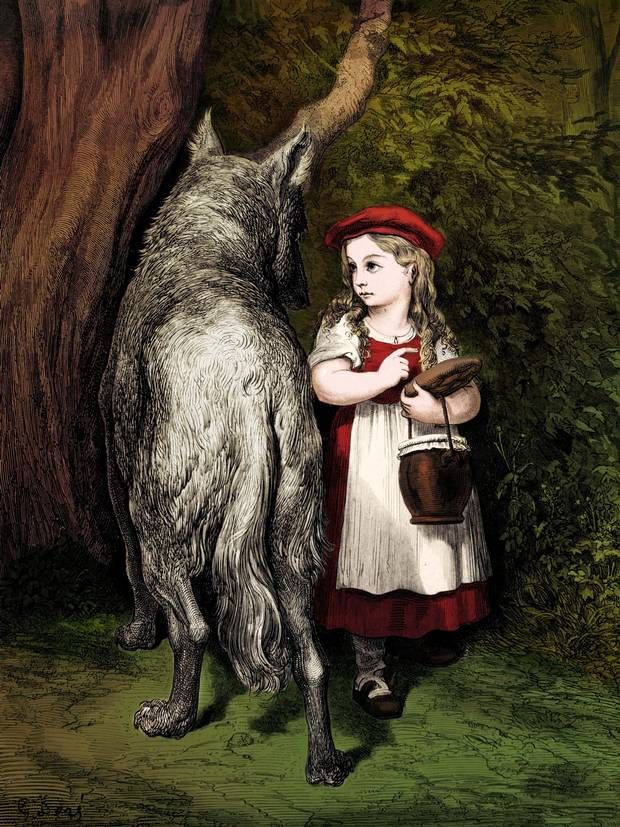 Over the years the story has spread to several countries and has undergone numerous adaptations, making it one of the most well-known fables in the world.
Over the years the story has spread to several countries and has undergone numerous adaptations, making it one of the most well-known fables in the world.
What Children Will Learn
The story of Little Red Riding Hood has many lessons. The main message for children is to obey adults and how trusting strangers can be dangerous. The tale also shows that appearances are deceiving and that sometimes a path may seem easier, but it is not always the best one to follow.
Little Red Riding Hood
Little Red Riding Hood is a kind and innocent little girl. She loves to visit her grandma who lives in the forest, bringing her delicious sweets and bread. She never leaves home without her red hood, which was a special gift from Grandma. However, one day she disobeys her mother and learns a great lesson.
Origin Of The Story
The classic tale of Little Red Riding Hood originated from European fables of the 20th century, its best-known version was published by the Brothers Grimm.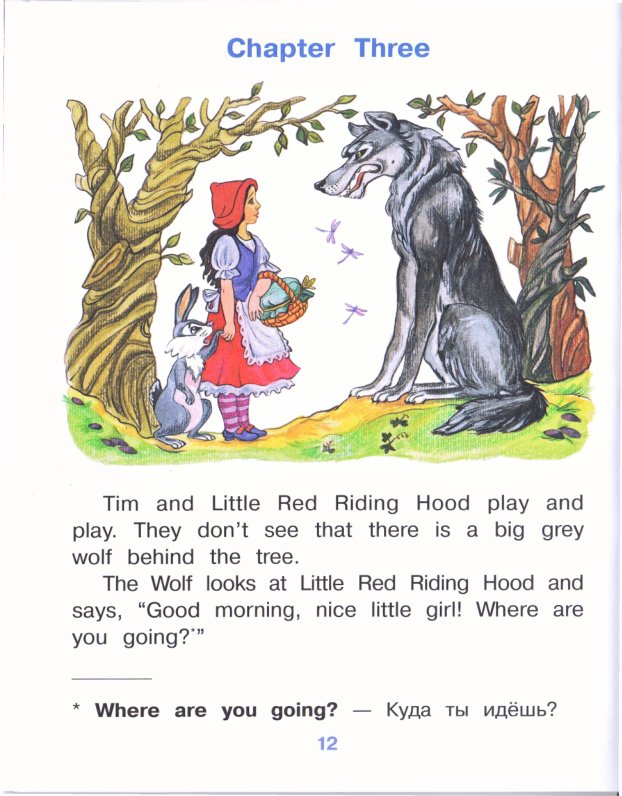 Over the years the story has spread to several countries and has undergone numerous adaptations, making it one of the most well-known fables in the world.
Over the years the story has spread to several countries and has undergone numerous adaptations, making it one of the most well-known fables in the world.
What Children Will Learn
The story of Little Red Riding Hood has many lessons. The main message for children is to obey adults and how trusting strangers can be dangerous. The tale also shows that appearances are deceiving and that sometimes a path may seem easier, but it is not always the best one to follow.
The experience goes beyond reading
To make the experience last beyond the story, you will receive the book along with our special Little Reader's certificate.
Personalized book
Personalization creates greater connection between the child and story, stimulating their interest in reading.
Reader's certificate
With the child's signature it becomes a special memory which celebrates your child's passion for reading.
A unique gift of impeccable quality
The personalized book Personalized classic tale has 36 pages of 8.5” x 11” (222mm x 286mm), printed on US A4 letter. The hardcover is 8.75” x 11.25” , uncoated and sustainable (FSC certified).
The hardcover helps guarantee the quality and durability of the books to preserve these special memories forever!
More Playstories books to make your child feel special
Best-seller
Best-sellerThe Tale of the Three Little Pigs
Personalized version of the classic!
$44.90
Masha and the Bear
Playing Through The Seasons
$44.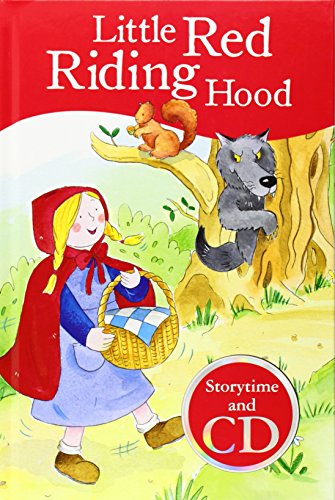 90
90
Best-seller
Best-sellerMasha and the Bear
Surprise For Bear
$44.90
Best-seller
Best-sellerOn A Journey Among Dinosaurs
Perfect for dinosaur lovers!
$44.90
Best-seller
Best-sellerThe Tale of the Three Little Pigs
Personalized version of the classic!
$44.90
Masha and the Bear
Playing Through The Seasons
$44.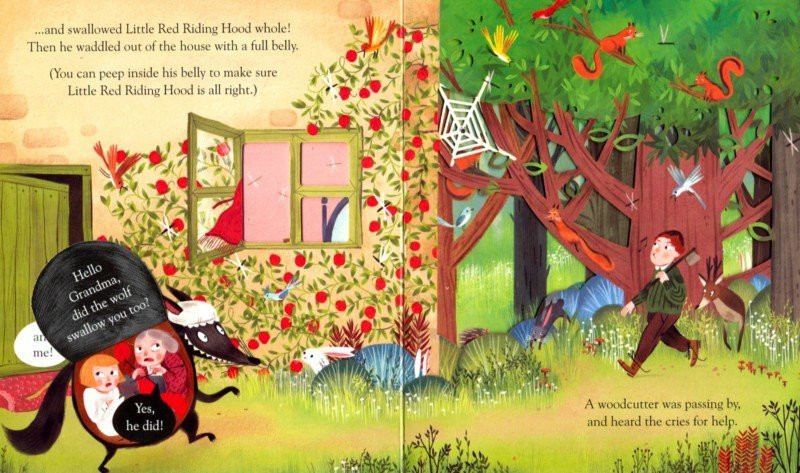 90
90
Best-seller
Best-sellerMasha and the Bear
Surprise For Bear
$44.90
Best-seller
Best-sellerOn A Journey Among Dinosaurs
Perfect for dinosaur lovers!
$44.90
Best-seller
The Tale of the Three Little Pigs
Personalized version of the classic!
$44.90
Masha and the Bear
Playing Through The Seasons
$44.90
Best-seller
Masha and the Bear
Surprise For Bear
$44.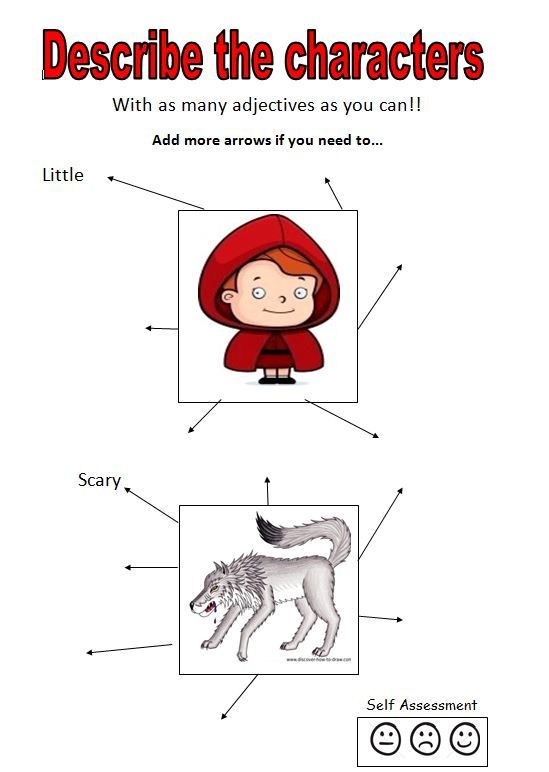 90
90
Best-seller
On A Journey Among Dinosaurs
Perfect for dinosaur lovers!
$44.90
Little Red Riding Hood | it's... What is Little Red Riding Hood?
This term has other meanings, see Little Red Riding Hood (meanings).
"Little Red Riding Hood". Oil painting by Swiss artist Albert Anker, (1883)
Little Red Riding Hood, dressed in a chaperon, meets a wolf; illustration by Walter Crane
Illustration for the German version of the tale, Rotkäppchen , from German. Käppchen Cap
Little Red Riding Hood (French Le Petit Chaperon Rouge ; German Rotkäppchen ) is a European folk tale about a little girl who meets a wolf. Literally processed by Charles Perrault, later recorded by the Brothers Grimm.
|
Contents
|
Origin of the plot
Illustration by Arthur Rockham
Illustration by Gustave Doré
Tomlinson illustration
The story of a girl deceived by a wolf (No. 333 according to the Aarne-Thompson classification) has been common in France and Italy since the Middle Ages. In the foothills of the Alps and in the Tyrol, the tale has been known since at least the 14th century, and was especially popular.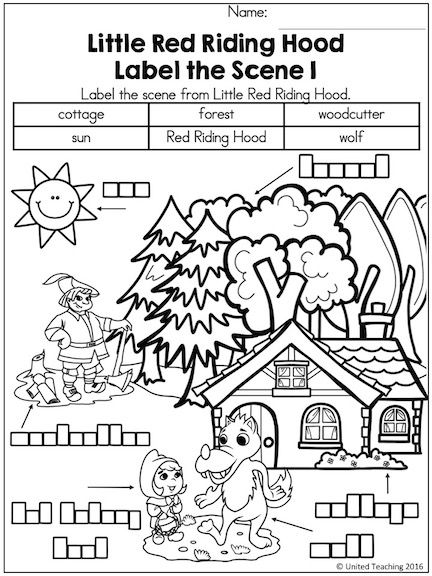 The contents of the basket varied: in northern Italy a granddaughter brought fresh fish to her grandmother, in Switzerland a head of young cheese, in southern France a patty and a pot of butter [1] . In folklore records, the plot looks like this [2] [3] :
The contents of the basket varied: in northern Italy a granddaughter brought fresh fish to her grandmother, in Switzerland a head of young cheese, in southern France a patty and a pot of butter [1] . In folklore records, the plot looks like this [2] [3] :
The mother sends her daughter to her grandmother with milk and bread. She meets a wolf, tells him where she is going. The wolf overtakes the girl, kills the grandmother, prepares food from her body, and a drink from the blood, dresses in grandmother's clothes and lies down in her bed. When the girl arrives, the wolf offers her food. Grandma's cat tries to warn the girl that she is eating her grandmother's remains, but the wolf throws wooden shoes at the cat and kills her. Then the wolf invites the girl to undress and lie down next to him, and throw the clothes into the fire. She does so and, lying down next to the wolf, asks why he has a lot of hair, broad shoulders, long nails, big teeth. To the last question, the wolf replies: “This is to quickly eat you, my child!” and eat the girl.
To the last question, the wolf replies: “This is to quickly eat you, my child!” and eat the girl.
Most of the written versions end in this way, although in some the girl escapes the wolf with the help of cunning.
Literary processing
Charles Perrault
Charles Perrault literary processed the folk story (presumably heard by him in childhood from his nanny) [ source unspecified 961 day ] . He removed the motif of cannibalism, the cat character and its murder by a wolf, introduced a defiant little red riding hood - a "companion" cap (in the original - “chaperon” (fr. chaperon ), which went out of fashion in the cities at the time of Perrault, but was popular with women in the countryside), which was worn by a girl, and most importantly, he moralized the tale, introducing the motive of the girl’s violation of decency, for which she paid the price, and concluded the tale with a poetic moral, instructing the maidens to beware of seducers.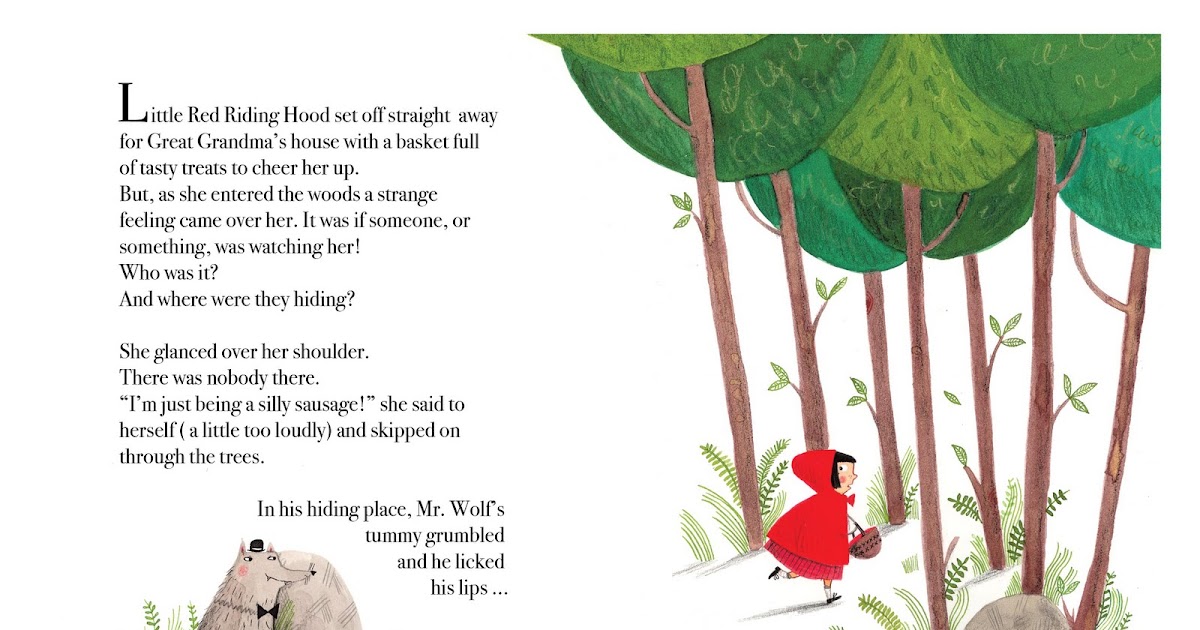 Thus, although the coarse naturalistic moments of the folk tale were significantly softened, the appeal to the question of the relationship of the sexes was emphasized.
Thus, although the coarse naturalistic moments of the folk tale were significantly softened, the appeal to the question of the relationship of the sexes was emphasized.
The tale was published in 1697 in Paris, in the book "Tales of Mother Goose, or Stories and Tales of Old Times with Instructions", better known as "Tales of Mother Goose". [1]
The Brothers Grimm
That version of the fairy tale, which became a classic in modern children's literature, was written down a century after Perrault's death by the Brothers Grimm, according to one version, from Maria Muller, who worked as a housekeeper in the house of her future wife Wilhelm Grimm. [4] According to another version, from Jeanette Hassenpflug, who, by her mother, descended from the Huguenots expelled from France under Louis XIV. It is assumed that the "Little Red Riding Hood" in its version went back to the same Perro [3] .
A happy ending has been added to the tale: in this variant, the woodcutters passing by, hearing a noise, kill the wolf, cut open its belly and save Grandmother and Little Red Riding Hood.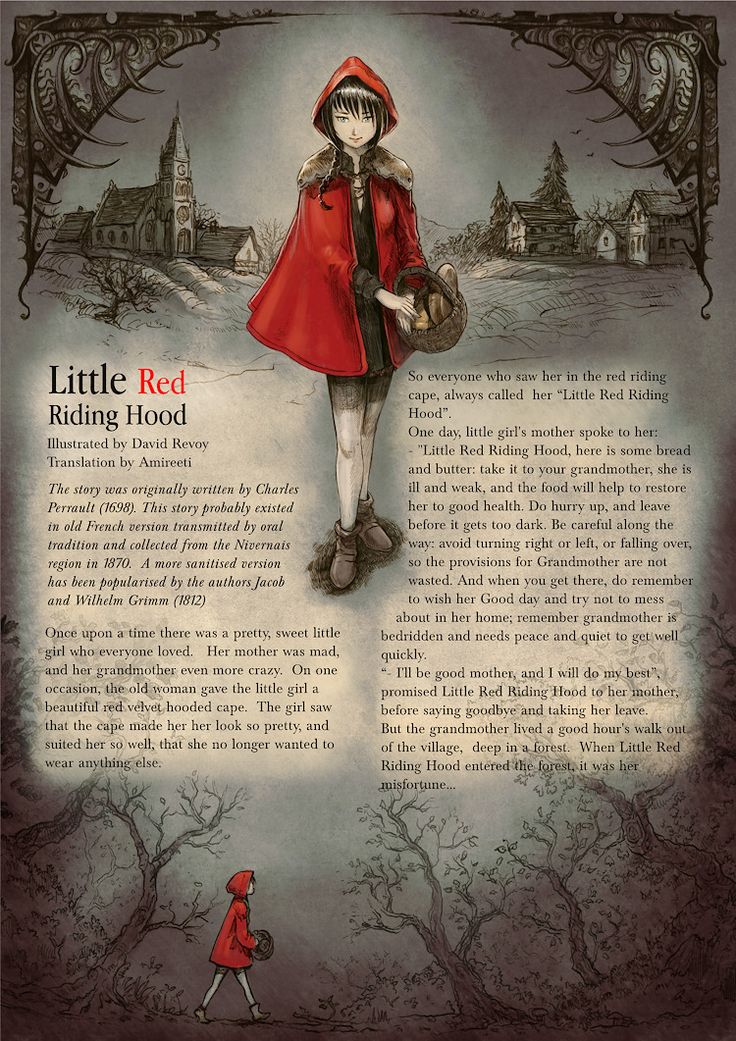 According to one version, this episode was borrowed from another popular German fairy tale "The Wolf and the Seven Kids" [5] , according to another - from the play "The Life and Death of Little Red Riding Hood", written in 1800 by the German romantic writer Ludwig Tieck [ 1] .
According to one version, this episode was borrowed from another popular German fairy tale "The Wolf and the Seven Kids" [5] , according to another - from the play "The Life and Death of Little Red Riding Hood", written in 1800 by the German romantic writer Ludwig Tieck [ 1] .
Perrault's moralizing about the relationship of the sexes has disappeared from the fairy tale, like all sexually colored motifs. In the text of the tale, Little Red Riding Hood violates not decency, but the will of the mother, who asks her daughter to go to her grandmother, without being distracted by anything. The moral at the end is introduced as a warning to naughty children: "Well, now I will never run away from the main road in the forest, I will not disobey my mother's order anymore."
Russian translations and retellings
In Russia, the fairy tale has been repeatedly reprinted. P. N. Polevoi’s version is a complete translation of the Brothers Grimm’s version, but later the retelling by I.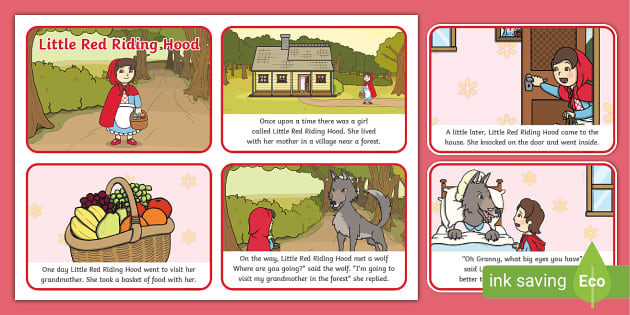 S. Turgenev [6] , which removed the motive for violating the prohibition and some details of the descriptions, became the most common.
S. Turgenev [6] , which removed the motive for violating the prohibition and some details of the descriptions, became the most common.
Illustrations of the fairy tale in Russian usually depict a girl's cap proper (according to the fairy tale by the Brothers Grimm) instead of the original French cape-hood. The situation is the same in many other countries, where the word "chaperone" was replaced when translated into "cap", "hat", "cap".
Little Red Riding Hood in psychology
In Eric Berne's book “Games people play. People who play games” the fairy tale about Little Red Riding Hood is analyzed as an example of “games”, life scenarios. In practice, from the modern processing of the fairy tale, Bern again extracts its archaic background, but presents the seducer not as a wolf, but as Little Red Riding Hood herself, embodying one of the teenage scenarios [7] .
Another variant of interpretation involves the disclosure of the scenario triangle "Victim - Rapist - Rescuer" with a rotation of roles [8] .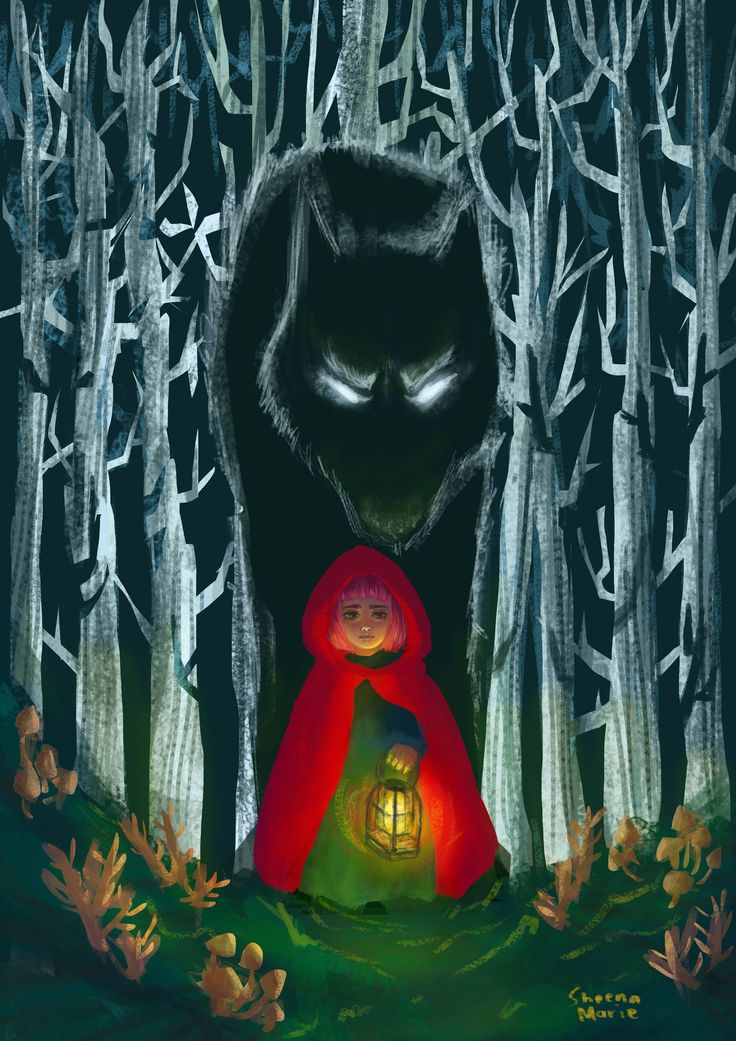
Film adaptations and productions
Musical works
- Etude-painting op. 39 No. 6 S. V. Rachmaninov — Little Red Riding Hood and the Gray Wolf
- Little Red Riding Hood (1911) — children's opera by composer César Cui
Classic adaptations
- Little Red Riding Hood (1937) — black-and-white cartoon of the Brumberg sisters, USSR. Made in the classic "Disney" style.
- Little Red Riding Hood (1989) - a musical by Adam Brooks, which retained the main storyline of the fairy tale, produced by the USA-Israel.
Fairy tale rethinking
1939 poster
- Red Hot Riding Hood (1943) and its sequel Swing Shift Cinderella (1945) are US-made cartoons. Comedy shorts that start with the classic story of Little Red Riding Hood.
- Petya and Little Red Riding Hood (1958) - cartoon, USSR. In this cartoon, the pioneer Petya Ivanov magically gets into the old fairy tale and helps Little Red Riding Hood and Grandmother to cope with the wolf.
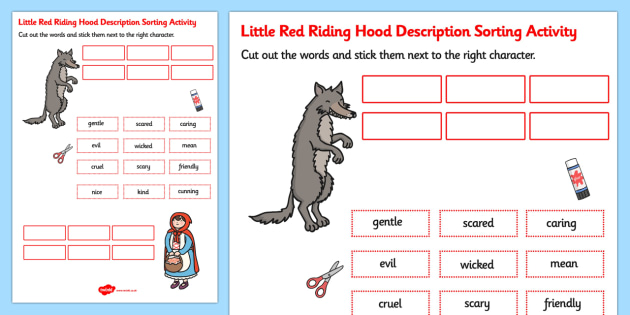
- Pro Little Red Riding Hood (1977) — musical film, USSR. The film is a continuation of the classic fairy tale. The wolves in the movie are not so bad, and the lumberjacks are not so brave. Little Red Riding Hood ends up saving the wolves from cruel people.
- In the Company of Wolves (1984) - a film with variations based on Little Red Riding Hood.
- Gray Wolf and Little Red Riding Hood (1990) - animated film by Harry Bardin, USSR. Satirical "plasticine" cartoon.
- Lumi (1991) - a feature film by Vladimir Bragin, USSR. Thriller about a werewolf, a rethinking of the story of Little Red Riding Hood.
- Highway (1996) - feature film, USA. Thriller with elements of "black" comedy. Little Red Riding Hood (Vanessa Lutz played by Reese Witherspoon) goes to live with her grandmother after her mother (a prostitute) and stepfather (her pimp) are arrested. On the way, she votes on the highway and stops a car whose driver (Kiefer Sutherland's Bob Woolverton) turns out to be a serial killer.
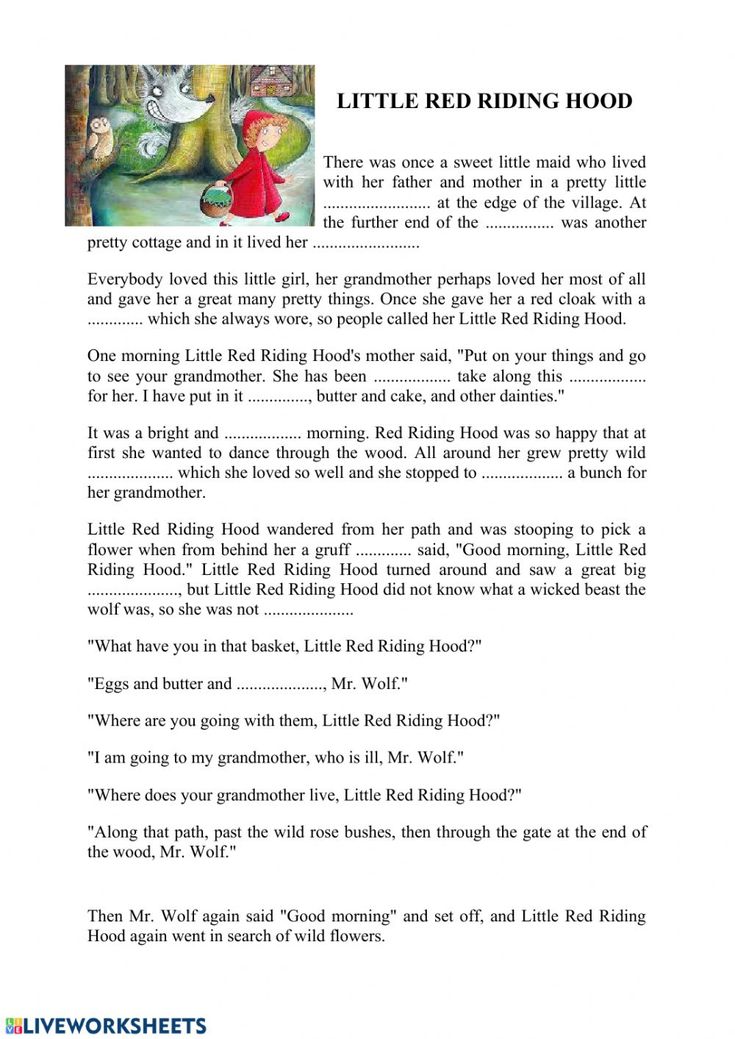 The opening credits for the film are illustrations of the story of Little Red Riding Hood, the plot basically repeats the original.
The opening credits for the film are illustrations of the story of Little Red Riding Hood, the plot basically repeats the original. - Werewolves (1998) is an anime directed by Hiroyuki Okiura. The film is a dystopia, the plot of the fairy tale is used in an allegorical form.
- The True Story of Little Red Riding Hood (2005) is an animated comedy film, USA.
- Lollipop (film) (2005) - a thriller directed by David Slade about the meeting of a 14-year-old girl ("Little Red Riding Hood" as a "wolf") and a 32-year-old photographer who met on the Internet.
- Chervona Shapochka (2008) - New Year's television musical of the 1 + 1 channel, Ukraine.
- Little Red Riding Hood ( Red Riding Hood , 2011) - American thin. film, produced by Leonardo DiCaprio, a gothic adaptation of a fairy tale where the wolf is a werewolf living in the village.
- Fairy Tale Cars: Little Red Riding Hood (2011) is a moralizing short cartoon featuring Little Red Riding Hood, a wolf, grandmother and Kolobok in the retelling of Masha from the animated series "Masha and the Bear".
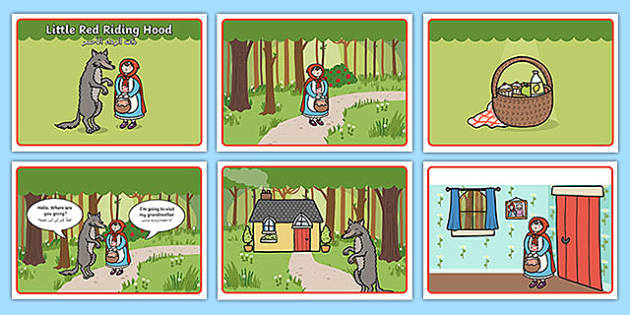 At the end, the wolf, having swallowed Grandmother, Riding Hood and Kolobok, burst, and Kolobok was swallowed by a fox.
At the end, the wolf, having swallowed Grandmother, Riding Hood and Kolobok, burst, and Kolobok was swallowed by a fox. - Once Upon a Time (2011) is an American fantasy television series on ABC. Little Red Riding Hood is played by actress Megan Ory.
Computer games
- The Path is a game from independent developers with a story based on a fairy tale.
See also
- Grimm's Tales
Notes
- ↑ 1 2 3 Article Vorontsova "Typoline History of the Red Shop" in No. 44/2002 of the newspaper "Literature"
- ↑ Jack Zipes, "The Trials and Tribulations of Little Red Riding Hood"
- ↑ 1 2 Robert Darnton. The Great Cat Massacre and Other Episodes from the History of French Culture. Moscow, New Literary Review, 2002. ISBN 5-86793-113-7
- ↑ Gerstner G.
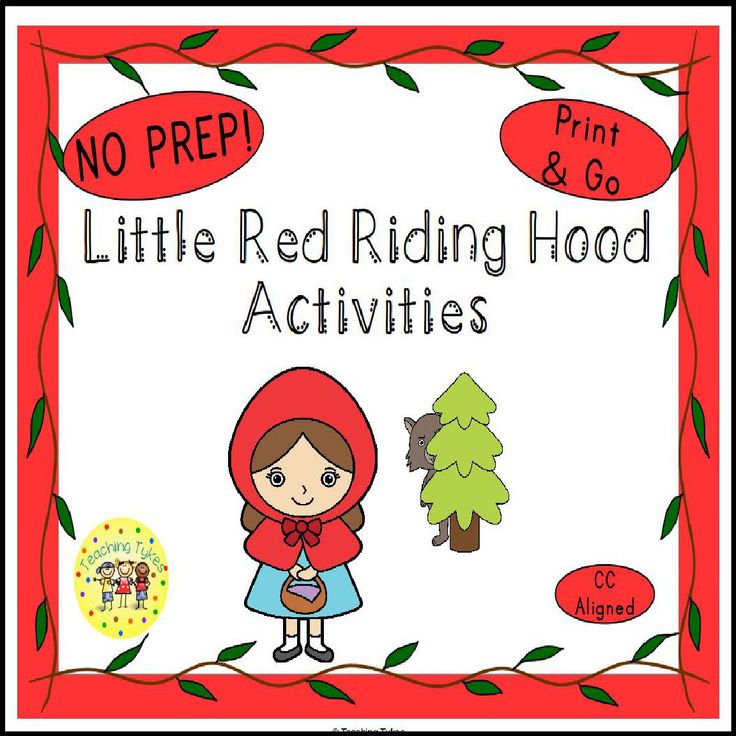 Brothers Grimm / Per. with him. E. A. Shenshina; Foreword G. A. Shevchenko. - M .: Mol. guard, 1980. - 271 p., ill. - (Life of remarkable people. Series of biographies. Issue 7 (603).
Brothers Grimm / Per. with him. E. A. Shenshina; Foreword G. A. Shevchenko. - M .: Mol. guard, 1980. - 271 p., ill. - (Life of remarkable people. Series of biographies. Issue 7 (603). - ↑ Harry Velten, "The Influences of Charles Perrault's Contes de ma Mère L'oie on German Folklore", p 967, Jack Zipes, ed. The Great Fairy Tale Tradition: From Straparola and Basile to the Brothers Grimm , ISBN 0-393-97636-X
- ↑ "Little Red Riding Hood" in the retelling of I. S. Turgenev
- ↑ Little Red Riding Hood: Excerpt from E. Berne's book “Games People Play. People who play games" and a fairy tale with a poetic conclusion by Charles Perrault
- ↑ Galina Bednenko, Tatyana Lapshina. The Tale of Little Red Riding Hood and the Gray Wolf: A Useful Identifier
Little Red Riding Hood | it's... What is Little Red Riding Hood?
This term has other meanings, see Little Red Riding Hood (meanings).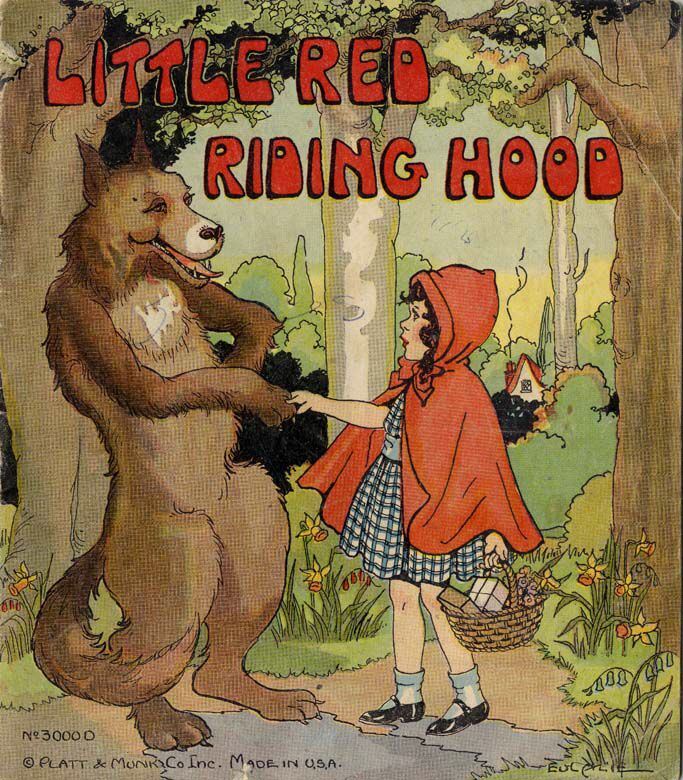
"Little Red Riding Hood". Oil painting by Swiss artist Albert Anker, (1883)
Little Red Riding Hood, dressed in a chaperon, meets a wolf; illustration by Walter Crane
Illustration for the German version of the fairy tale, Rotkäppchen , from German. Käppchen - "cap"
"Little Red Riding Hood" (French Le Petit Chaperon Rouge ; German Rotkäppchen ) - European folk tale with a story about a little girl who met a wolf. Literally processed by Charles Perrault, later recorded by the Brothers Grimm.
|
Contents
|
Origin of the plot
Illustration by Arthur Rockham
Illustration by Gustave Doré
Illustration by Tomlinson
The story of a girl deceived by a wolf (No. 333 according to Aarne-Thompson's classification) has been common in France and Italy since the Middle Ages. In the foothills of the Alps and in the Tyrol, the tale has been known since at least the 14th century, and was especially popular. The contents of the basket varied: in northern Italy a granddaughter brought fresh fish to her grandmother, in Switzerland a head of young cheese, in southern France a patty and a pot of butter [1] . In folklore records, the plot looks like this [2] [3] :
A mother sends her daughter to her grandmother with milk and bread. She meets a wolf, tells him where she is going. The wolf overtakes the girl, kills the grandmother, prepares food from her body, and a drink from the blood, dresses in grandmother's clothes and lies down in her bed. When the girl arrives, the wolf offers her food. Grandma's cat tries to warn the girl that she is eating her grandmother's remains, but the wolf throws wooden shoes at the cat and kills her. Then the wolf invites the girl to undress and lie down next to him, and throw the clothes into the fire. She does so and, lying down next to the wolf, asks why he has a lot of hair, broad shoulders, long nails, big teeth. To the last question, the wolf replies: “This is to quickly eat you, my child!” and eat the girl.
She meets a wolf, tells him where she is going. The wolf overtakes the girl, kills the grandmother, prepares food from her body, and a drink from the blood, dresses in grandmother's clothes and lies down in her bed. When the girl arrives, the wolf offers her food. Grandma's cat tries to warn the girl that she is eating her grandmother's remains, but the wolf throws wooden shoes at the cat and kills her. Then the wolf invites the girl to undress and lie down next to him, and throw the clothes into the fire. She does so and, lying down next to the wolf, asks why he has a lot of hair, broad shoulders, long nails, big teeth. To the last question, the wolf replies: “This is to quickly eat you, my child!” and eat the girl.
Most of the written versions end in this way, although in some the girl escapes the wolf with the help of cunning.
Literary processing
Charles Perrault
Charles Perrault literary processed the folk story (presumably heard by him in childhood from his nanny) [ source unspecified 961 day ] .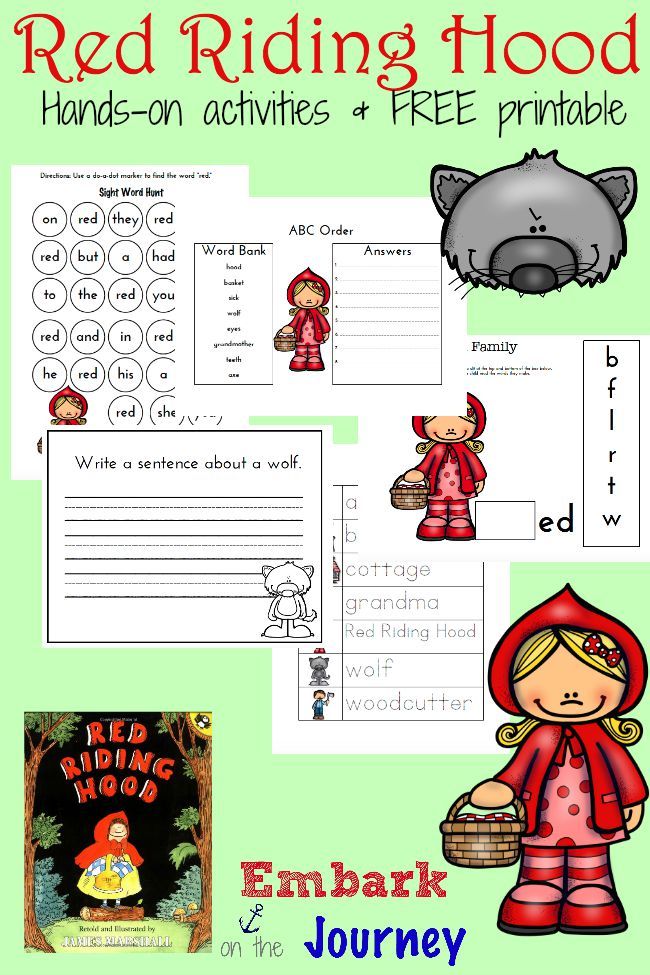 He removed the motif of cannibalism, the cat character and its murder by a wolf, introduced a defiant little red riding hood - a "companion" cap (in the original - “chaperon” (fr. chaperon ), which went out of fashion in the cities at the time of Perrault, but was popular with women in the countryside), which was worn by a girl, and most importantly, he moralized the tale, introducing the motive of the girl’s violation of decency, for which she paid the price, and concluded the tale with a poetic moral, instructing the maidens to beware of seducers. Thus, although the coarse naturalistic moments of the folk tale were significantly softened, the appeal to the question of the relationship of the sexes was emphasized.
He removed the motif of cannibalism, the cat character and its murder by a wolf, introduced a defiant little red riding hood - a "companion" cap (in the original - “chaperon” (fr. chaperon ), which went out of fashion in the cities at the time of Perrault, but was popular with women in the countryside), which was worn by a girl, and most importantly, he moralized the tale, introducing the motive of the girl’s violation of decency, for which she paid the price, and concluded the tale with a poetic moral, instructing the maidens to beware of seducers. Thus, although the coarse naturalistic moments of the folk tale were significantly softened, the appeal to the question of the relationship of the sexes was emphasized.
The tale was published in 1697 in Paris, in the book "Tales of Mother Goose, or Stories and Tales of Old Times with Instructions", better known as "Tales of Mother Goose". [1]
The Brothers Grimm
That version of the fairy tale, which became a classic in modern children's literature, was written down a century after Perrault's death by the Brothers Grimm, according to one version, from Maria Muller, who worked as a housekeeper in the house of her future wife Wilhelm Grimm.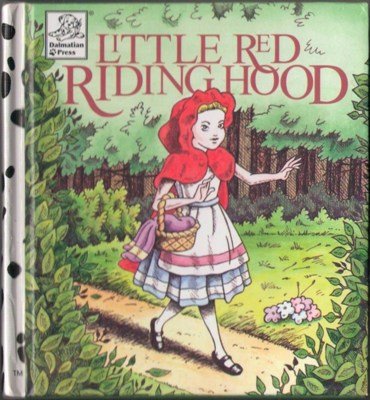 [4] According to another version, from Jeanette Hassenpflug, who, by her mother, descended from the Huguenots expelled from France under Louis XIV. It is assumed that the "Little Red Riding Hood" in its version went back to the same Perro [3] .
[4] According to another version, from Jeanette Hassenpflug, who, by her mother, descended from the Huguenots expelled from France under Louis XIV. It is assumed that the "Little Red Riding Hood" in its version went back to the same Perro [3] .
A happy ending has been added to the tale: in this variant, the woodcutters passing by, hearing a noise, kill the wolf, cut open its belly and save Grandmother and Little Red Riding Hood. According to one version, this episode was borrowed from another popular German fairy tale "The Wolf and the Seven Kids" [5] , according to another - from the play "The Life and Death of Little Red Riding Hood", written in 1800 by the German romantic writer Ludwig Tieck [ 1] .
Perrault's moralizing about the relationship of the sexes has disappeared from the fairy tale, like all sexually colored motifs. In the text of the tale, Little Red Riding Hood violates not decency, but the will of the mother, who asks her daughter to go to her grandmother, without being distracted by anything.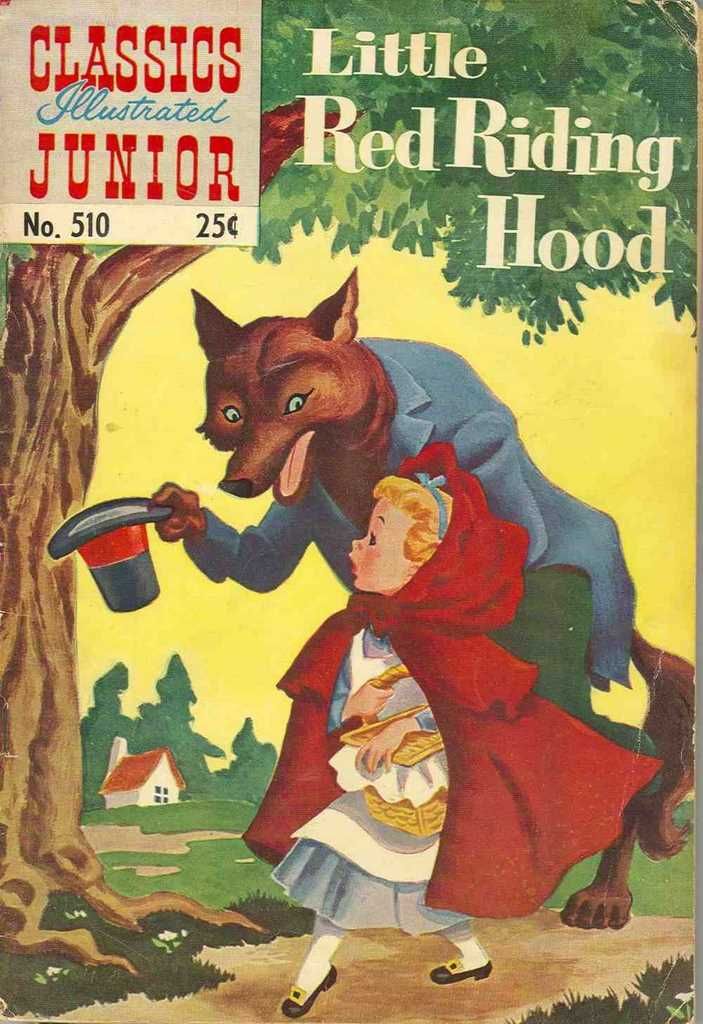 The moral at the end is introduced as a warning to naughty children: "Well, now I will never run away from the main road in the forest, I will not disobey my mother's order anymore."
The moral at the end is introduced as a warning to naughty children: "Well, now I will never run away from the main road in the forest, I will not disobey my mother's order anymore."
Russian translations and retellings
In Russia, the fairy tale has been repeatedly reprinted. P. N. Polevoi’s version is a complete translation of the Brothers Grimm’s version, but later the retelling by I. S. Turgenev [6] , which removed the motive for violating the prohibition and some details of the descriptions, became the most common.
Illustrations of the fairy tale in Russian usually depict a girl's cap proper (according to the fairy tale by the Brothers Grimm) instead of the original French cape-hood. The situation is the same in many other countries, where the word "chaperone" was replaced when translated into "cap", "hat", "cap".
Little Red Riding Hood in psychology
In Eric Berne's book “Games people play. People who play games” the fairy tale about Little Red Riding Hood is analyzed as an example of “games”, life scenarios. In practice, from the modern processing of the fairy tale, Bern again extracts its archaic background, but presents the seducer not as a wolf, but as Little Red Riding Hood herself, embodying one of the teenage scenarios [7] .
In practice, from the modern processing of the fairy tale, Bern again extracts its archaic background, but presents the seducer not as a wolf, but as Little Red Riding Hood herself, embodying one of the teenage scenarios [7] .
Another variant of interpretation involves the disclosure of the scenario triangle "Victim - Rapist - Rescuer" with a rotation of roles [8] .
Film adaptations and productions
Musical works
- Etude-painting op. 39 No. 6 S. V. Rachmaninov — Little Red Riding Hood and the Gray Wolf
- Little Red Riding Hood (1911) — children's opera by composer César Cui
Classic adaptations
- Little Red Riding Hood (1937) — black-and-white cartoon of the Brumberg sisters, USSR. Made in the classic "Disney" style.
- Little Red Riding Hood (1989) - a musical by Adam Brooks, which retained the main storyline of the fairy tale, produced by the USA-Israel.
Fairy tale rethinking
1939 poster
- Red Hot Riding Hood (1943) and its sequel Swing Shift Cinderella (1945) are US-made cartoons.
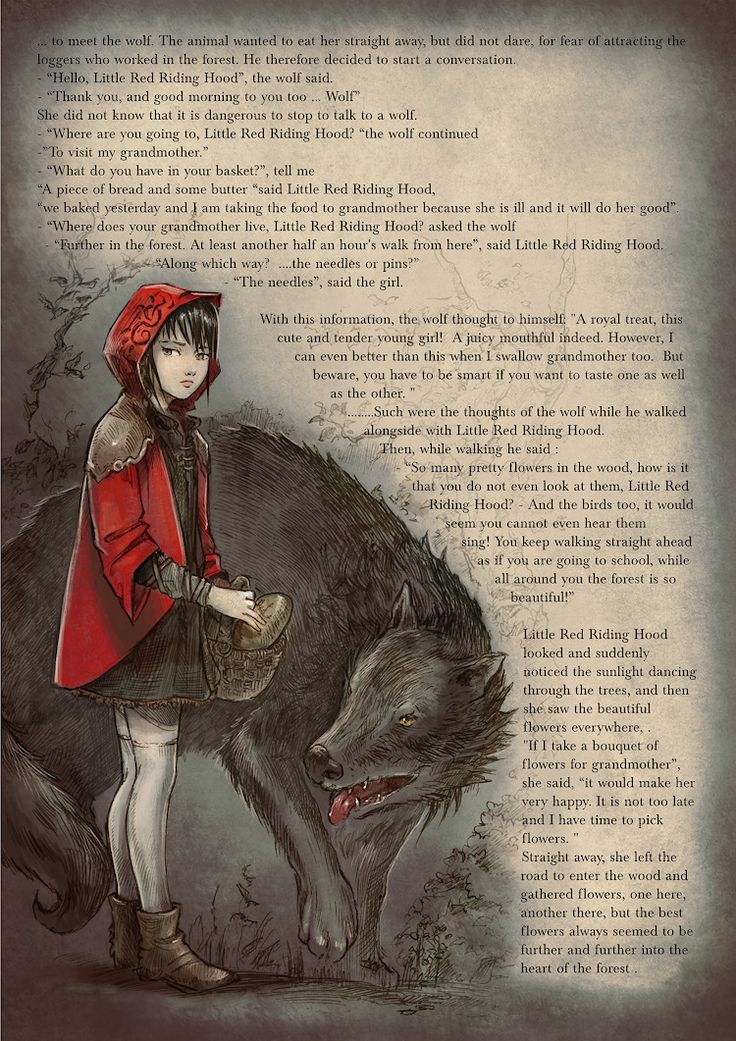 Comedy shorts that start with the classic story of Little Red Riding Hood.
Comedy shorts that start with the classic story of Little Red Riding Hood. - Petya and Little Red Riding Hood (1958) - cartoon, USSR. In this cartoon, the pioneer Petya Ivanov magically gets into the old fairy tale and helps Little Red Riding Hood and Grandmother to cope with the wolf.
- Pro Little Red Riding Hood (1977) — musical film, USSR. The film is a continuation of the classic fairy tale. The wolves in the movie are not so bad, and the lumberjacks are not so brave. Little Red Riding Hood ends up saving the wolves from cruel people.
- In the Company of Wolves (1984) - a film with variations based on Little Red Riding Hood.
- Gray Wolf and Little Red Riding Hood (1990) - animated film by Harry Bardin, USSR. Satirical "plasticine" cartoon.
- Lumi (1991) - a feature film by Vladimir Bragin, USSR. Thriller about a werewolf, a rethinking of the story of Little Red Riding Hood.
- Highway (1996) - feature film, USA. Thriller with elements of "black" comedy.
 Little Red Riding Hood (Vanessa Lutz played by Reese Witherspoon) goes to live with her grandmother after her mother (a prostitute) and stepfather (her pimp) are arrested. On the way, she votes on the highway and stops a car whose driver (Kiefer Sutherland's Bob Woolverton) turns out to be a serial killer. The opening credits for the film are illustrations of the story of Little Red Riding Hood, the plot basically repeats the original.
Little Red Riding Hood (Vanessa Lutz played by Reese Witherspoon) goes to live with her grandmother after her mother (a prostitute) and stepfather (her pimp) are arrested. On the way, she votes on the highway and stops a car whose driver (Kiefer Sutherland's Bob Woolverton) turns out to be a serial killer. The opening credits for the film are illustrations of the story of Little Red Riding Hood, the plot basically repeats the original. - Werewolves (1998) is an anime directed by Hiroyuki Okiura. The film is a dystopia, the plot of the fairy tale is used in an allegorical form.
- The True Story of Little Red Riding Hood (2005) is an animated comedy film, USA.
- Lollipop (film) (2005) - a thriller directed by David Slade about the meeting of a 14-year-old girl ("Little Red Riding Hood" as a "wolf") and a 32-year-old photographer who met on the Internet.
- Chervona Shapochka (2008) - New Year's television musical of the 1 + 1 channel, Ukraine.
- Little Red Riding Hood ( Red Riding Hood , 2011) - American thin.
 film, produced by Leonardo DiCaprio, a gothic adaptation of a fairy tale where the wolf is a werewolf living in the village.
film, produced by Leonardo DiCaprio, a gothic adaptation of a fairy tale where the wolf is a werewolf living in the village. - Fairy Tale Cars: Little Red Riding Hood (2011) is a moralizing short cartoon featuring Little Red Riding Hood, a wolf, grandmother and Kolobok in the retelling of Masha from the animated series "Masha and the Bear". At the end, the wolf, having swallowed Grandmother, Riding Hood and Kolobok, burst, and Kolobok was swallowed by a fox.
- Once Upon a Time (2011) is an American fantasy television series on ABC. Little Red Riding Hood is played by actress Megan Ory.
Computer games
- The Path is a game from independent developers with a story based on a fairy tale.
See also
- Grimm's Tales
Notes
- ↑ 1 2 3 Article Vorontsova "Typoline History of the Red Shop" in No.
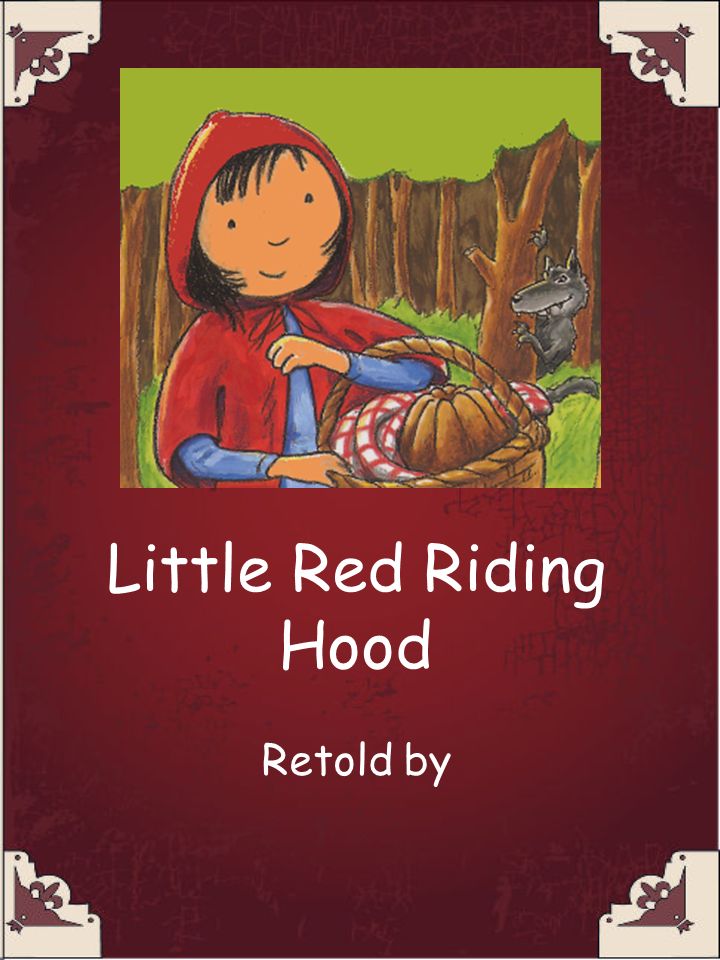 44/2002 of the newspaper "Literature"
44/2002 of the newspaper "Literature" - ↑ Jack Zipes, "The Trials and Tribulations of Little Red Riding Hood"
- ↑ 1 2 Robert Darnton. The Great Cat Massacre and Other Episodes from the History of French Culture. Moscow, New Literary Review, 2002. ISBN 5-86793-113-7
- ↑ Gerstner G. Brothers Grimm / Per. with him. E. A. Shenshina; Foreword G. A. Shevchenko. - M .: Mol. guard, 1980. - 271 p., ill. - (Life of remarkable people. Series of biographies. Issue 7 (603).
- ↑ Harry Velten, "The Influences of Charles Perrault's Contes de ma Mère L'oie on German Folklore", p 967, Jack Zipes, ed. The Great Fairy Tale Tradition: From Straparola and Basile to the Brothers Grimm , ISBN 0-393-97636-X
- ↑ "Little Red Riding Hood" in the retelling of I. S. Turgenev
- ↑ Little Red Riding Hood: Excerpt from E. Berne's book “Games People Play.
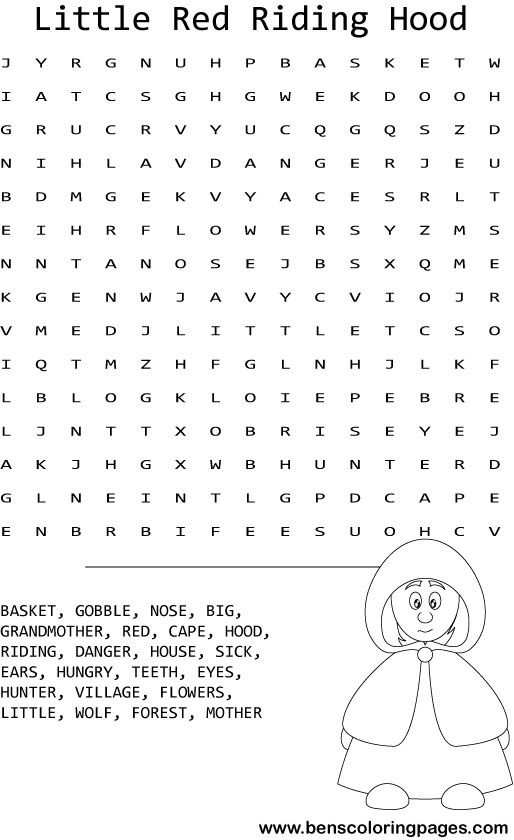

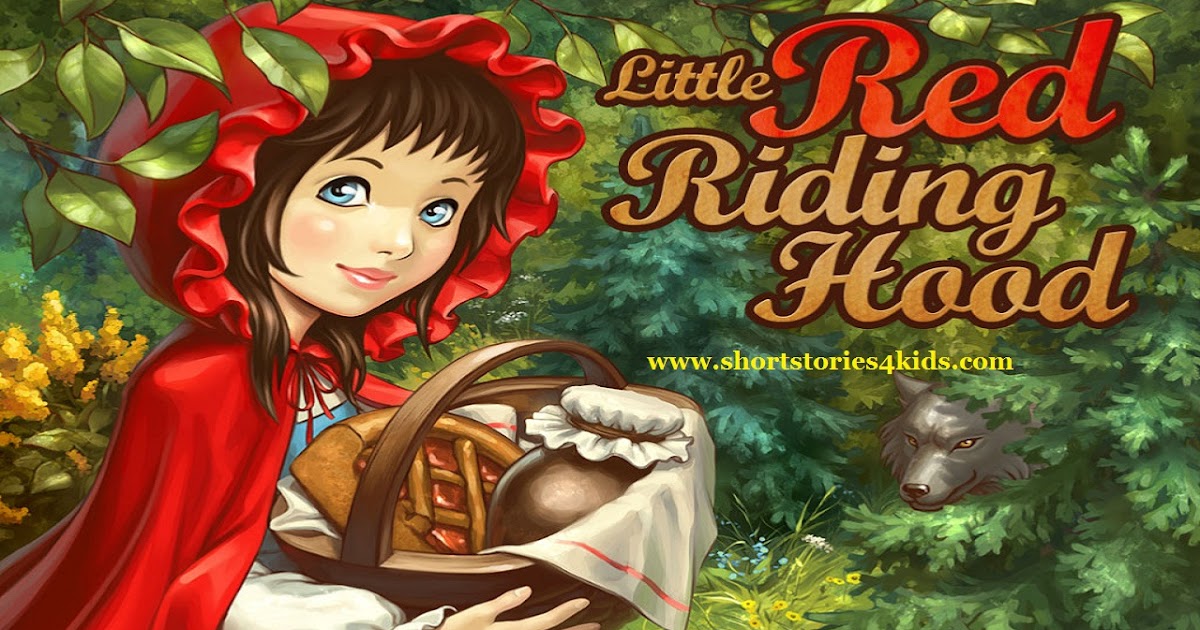 1 Musical works
1 Musical works 